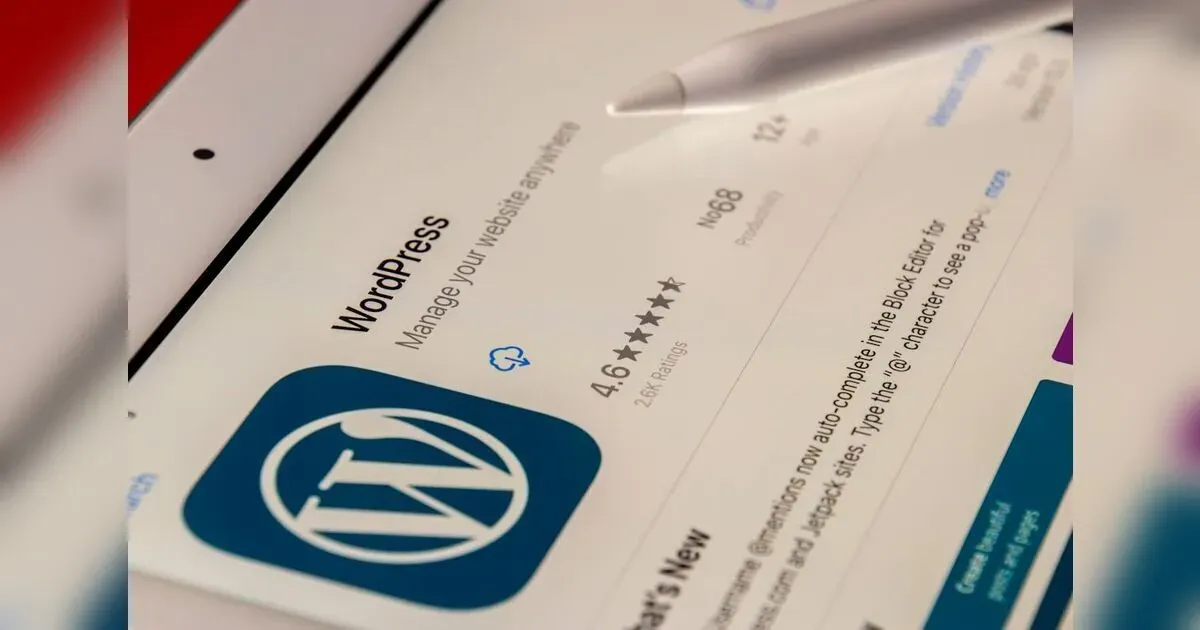Dismayed by rising energy costs? Feeling guilty about your home environment? You are not alone. Millions of homeowners share this concern. But what if you could manage both at the same time? The answer lies in building energy efficient buildings.
So, get ready to move into an affordable green future for your home. Let’s dive into the practical steps that will have a real impact on your energy consumption and wallet.
So, get ready to move into an affordable green future for your home. Let’s dive into the practical steps that will have a real impact on your energy consumption and wallet.
Factors to consider when choosing Energy-efficient home improvements tips.
Here are some key things to consider before choosing energy-efficient home improvement
- Budget and ROI (return on investment)
✓Consider long-term savings against upfront costs: Energy-efficient recycling can range from inexpensive behavioral changes to major repairs. Compare the initial investment with your expected utility bill savings.
✓Prioritize high-impact projects: Focus on high-energy-loss areas such as insulation or replacing old appliances.
✓Prioritize high-impact projects: Focus on high-energy-loss areas such as insulation or replacing old appliances.
- Your home and climate
✓Climate: The climate in your area greatly affects the most efficient development. Homes in tropical areas can greatly benefit from solar panels or improved air conditioning while colder regions prioritize insulation upgrades.
✓Home Type and Size: The size and layout of your home will greatly affect the quality of the development. Insulation requirements vary depending on building materials and size.
✓Home Type and Size: The size and layout of your home will greatly affect the quality of the development. Insulation requirements vary depending on building materials and size.
- Strength Assessment
✓Identify Problem Areas : A professional energy audit can pinpoint areas where your home is losing the most energy. This targeted approach allows you to prioritize the development that has the most impact.
✓Look for local incentives: Many places offer rebates or tax breaks to encourage energy-efficient development. Statistics can help identify these opportunities.
✓Look for local incentives: Many places offer rebates or tax breaks to encourage energy-efficient development. Statistics can help identify these opportunities.
- Long-term benefits
✓Increased comfort: Energy efficient homes tend to provide consistent and comfortable temperatures throughout the year.
✓Provide good ventilation: Proper ventilationcan reduce the amount of allergens and pollutants that enter your home.
✓Environmental: Reducing energy consumption in your home reduces your carbon footprint contributing to a more sustainable future.
✓Provide good ventilation: Proper ventilationcan reduce the amount of allergens and pollutants that enter your home.
✓Environmental: Reducing energy consumption in your home reduces your carbon footprint contributing to a more sustainable future.
- Other things to consider
✓DIY vs. DIY DIY Professional Installations: Some upgrades, like weather removal or LED bulb installations, are DIY-friendly. For complex projects like insulation or solar panel installation, consider hiring a professional to ensure the best possible results.
✓Beauty: Many energy-efficient renovations like modern windows or Energy Star appliances can also improve the overall appearance and value of your home.
By considering these factors, you can choose the most effective and cost-effective energy efficient home improvement for your specific needs.
✓Beauty: Many energy-efficient renovations like modern windows or Energy Star appliances can also improve the overall appearance and value of your home.
By considering these factors, you can choose the most effective and cost-effective energy efficient home improvement for your specific needs.
Seal and insulate: It’s a big punch on energy efficient homes
Slippery rooms and uneven temperatures can be a constant source of frustration and discomfort in your home. But what if it could create a more balanced and comfortable environment while saving money on energy costs? Covering air leaks and adding insulation are two effective ways to do so. Here’s why sealing and insulating your home is a winning combination for energy efficiency.
- Draft Reduction:
Drafts and unwanted drafts can be a big part of your home’s energy loss. Closing the surrounding windows, attic and basement prevents conditioned air from escaping in the summer and warm air from sneaking out in the summer. This is a job that reduces your HVAC system , resulting in lower energy consumption and smaller utility bills.
- Reinforced Insulation:
Effective insulation acts as hot air when it’s cold, and cold air when the weather is hot. By adding insulation to attics, crawl spaces, and walls you can significantly reduce heat. Transfer through materials, ensuring your home stays comfortably warm year-round .
- The benefits are two-fold:
True magic happens when you combine money with insulation. Closing the vents first ensures that unwanted heating and cooling energy is not wasted. Then, adding insulation improves the efficiency of the conditioned air inside your home. This one-two punch can result in energy savings of up to 15% in heating and cooling costs, according to the EPA [Why Seal and Insulate? - power star].
- Thinking of going green?
Sealing and insulation is a proven first step. The save you money and also contribute to a smaller environmental footprint hence reducing your overall energy consumption.
- Ready to get started?
There are many resources online and local energy suppliers to help identify air leaks and determine the best solutions to protect your home by taking action to seal and protect them, -living comfortable, energy efficient and affordable for the location of the investment.
Increase your savings: upgrade your appliances for an energy-efficient home
Looking to reduce your utility bills and reduce your environmental footprint? Upgrading your appliances to make the more energy efficient is a powerful home improvement strategy that can save you money for years. Here's how it works:
- What about Energy Efficient devices?
Energy effecient appliances are designed to use less energy to than their traditional counterparts. This means they can do the same thing- wash clothes, keep food fresh and dry- using less electricity or gas.
- How do they save you money?
Appliances are especially helpful for energy efficiency in the home. By being energy efficient, you will directly reduce the amount of energy you use in your home. This reduces monthly utility bills and puts more money in your pocket.
- Environmental benefits
In addition to saving cost, energy-efficient appliances help the environment. Because they use less energy, they help reduce greenhouse gas emissions and reduce carbon dioxide emissions. So, you're not only saving money, you're contributing to a more sustainable future.
- Access to the right equipment
Look for the energy star label when buying new appliances. This government-backed program includes models that meet stringet energy efficiency standards. Here are some of the key devices to consider when upgrading.
✓Refrigirators: Modern energy effecient refrigerators can use up to 50% less energy than older models.
✓Washing machine: Effecient washing machines use less water and energy per load.
✓Drying clothes: look for dryers with humidity direction technology that turns off automatically when clothes are dry, avoiding unnecessary energy consumption.
✓Dishwasher: An energy star certified dishwasher can save a lot of water and electricity
✓Refrigirators: Modern energy effecient refrigerators can use up to 50% less energy than older models.
✓Washing machine: Effecient washing machines use less water and energy per load.
✓Drying clothes: look for dryers with humidity direction technology that turns off automatically when clothes are dry, avoiding unnecessary energy consumption.
✓Dishwasher: An energy star certified dishwasher can save a lot of water and electricity
Invest in smart comfort: How installing a smart thermostat Increase energy efficiency
Looking for effective ways to green your home and reduce utility bills? Look no further than a smart thermostat! This subtle upgrade isn't just about convenience; it's a powerful tool to optimize your HVAC system and save energy. Here's how installing a smart thermostat can make your home more energy efficient.
- Exact plan:
Smart thermostat allow you to create customized heating and cooling systems. Instead of constantly heating your home, you can make adjustments based on your daily routine. Why heat your house on a workday? Smart thermostats allow you to automatically adjust the temperature while you're away and turn it up for your return.
- Learning materials:
Some smart thermostat go beyond simple settings. You learn your preference and habits over time, adjusting heating settings incredibly well for optimal comfort and performance.
- Remote access and use:
Ever forget to change the thermostat before you leave the house? Smart thermostats allow you to control the temperature from anywhere using your smartphone or tablet. This eliminates the possibility of unnecessary accidental features of your HVAC system.
- Changes in smart home systems:
For a truly connected home experience, you can integrate the smart thermostat with other smart home devices like motion sensors and smart windows. Consider variable blinds that will monitor sunlight and thermostats that keep the temperature down when no movement is detected, creating a fragile ecosystem that demands energy
- Data-Driven Insights:
Many smart thermostats provide detailed energy usage reports. This valuable information helps you identify patterns and areas where you can further improve performance.
- Easy to install:
While professional installation is always an option, there are many smart thermostats designed for the DIY enthusiast. Clear instructions and readily available online resources make adding smart controls to your HVAC system a manageable weekend project.
Installing a smart thermostat in your home is updating the technology and taking an important step towards a more sustainable life. Ditch the old thermostat and embrace the smart home revolution- your wallet and planet will thank you!
Installing a smart thermostat in your home is updating the technology and taking an important step towards a more sustainable life. Ditch the old thermostat and embrace the smart home revolution- your wallet and planet will thank you!
Light up your home and wallet: why switching to LED lighting is an energy-saving win
Look for an easy and effective way to increase your home's energy efficiency? Look no further than switching to LED lighting! LED (Light emitting diode) bulbs are quickly becoming the go-to items for eco-conscious homeowners and for good reason. Here's why switching to LEDs is brilliant decision.
- Reduce energy costs:
Traditional incandescent light bulbs are notoriously energy efficient. In contrast, LEDs used up to 85% more energy to provide the same amount of light (source genles.govt.nz). This great discount is a huge savings on your electricity bill.
- Long lasting lumens:
The lifespan of LED bulbs exceeds that of conventional bulbs. We're talking 10-25 times cooler! This means fewer trips to refinery and less waste ending up in landfills.
- Outside the bank: new advantage of LEDS.
While energy saving is a key benefit, LEDs have several advantages:
✓Vibrant colors: LEDs come in a wide range of vibrant colors from bright and inviting to cool and bright. This allows you to create the perfect atmosphere for any room.
✓ Durability: LEDs are built tougher & resist bumps and vibrations compared to incandescent bulbs.
✓ Eco-friendly: unlike the incandescents, LEDs do not contain harmful mercury, making them environmentally friendly.
✓Vibrant colors: LEDs come in a wide range of vibrant colors from bright and inviting to cool and bright. This allows you to create the perfect atmosphere for any room.
✓ Durability: LEDs are built tougher & resist bumps and vibrations compared to incandescent bulbs.
✓ Eco-friendly: unlike the incandescents, LEDs do not contain harmful mercury, making them environmentally friendly.
- If you switch to LED lighting
The transition to LEDs is a breeze. Standard bulb fixtures can accommodate LED bulbs, simply swap out your old ones for new energy-efficient LEDs.
By switching to LED lighting, you're making a smart investment in your home's energy efficiency, wallet and environment. Throw away the old bulbs and light your home with a bright future of LED lighting!
By switching to LED lighting, you're making a smart investment in your home's energy efficiency, wallet and environment. Throw away the old bulbs and light your home with a bright future of LED lighting!
Optimizing the efficiency of your hot water: Efficient energy spraying in your home
Looking for ways to make your home more environmentally friendly and reduce your utility bills? Upgrading your water heater a good home improvement strategy with long-term benefits. Here’s why:
- High energy savings
Conventional water heaters heat and reheat tanks, even when not in use. This loss of heat can be significant. Switching to more efficient systems can significantly reduce energy consumption. Tankless units heat water only when needed, eliminating standby losses and reducing your energy costs by up to 40%.
- Modern energy efficiency
New water heaters come equipped with advanced energy efficiency features. These include:
✓Water efficiency: Find a water heater with an energy factor (EF) rating. Higher EF values indicate greater efficiency in converting the fuel to usable liquid vapor.
✓Programmable Thermostat: Enjoy precise water temperature control. You can schedule the heater in different schedules throughout the day, ensure hot water is available when needed, and set up a cooling system for less important times.
✓Improved insulation: Well-insulated water heaters retain heat more efficiently, reducing the energy needed to achieve optimal temperatures.
✓Water efficiency: Find a water heater with an energy factor (EF) rating. Higher EF values indicate greater efficiency in converting the fuel to usable liquid vapor.
✓Programmable Thermostat: Enjoy precise water temperature control. You can schedule the heater in different schedules throughout the day, ensure hot water is available when needed, and set up a cooling system for less important times.
✓Improved insulation: Well-insulated water heaters retain heat more efficiently, reducing the energy needed to achieve optimal temperatures.
- Long-term investment
While the cost of a new water heater may seem high, energy savings translate into utility costs over time length. In addition, high-performance appliances tend to last longer, reducing the cost of future replacements.
By making hot water energy efficient you are not only helping the environment but you are also making a smart investments in your wallet. Consider speaking to a plumber on your water heater needs and recommend the most efficient
By making hot water energy efficient you are not only helping the environment but you are also making a smart investments in your wallet. Consider speaking to a plumber on your water heater needs and recommend the most efficient
Conclusion
In conclusion, by implementing these simple and inexpensive home improvement tips that will save you a lot of energy, you can make a big difference in your energy usage and environment surrounding yourself although upgrades may require a small initial investment, the long-term savings on your utility will quickly exceed the initial cost. Remember that even small changes can advance a greener future by significantly reducing energy and putting money back in your pocket. Start with simple items like LED bulbs and ceiling fans, and consider adding more advanced features as your budget allows. By taking this steps, you'll be creating a more comfortable, sustainable and energy-efficient home for yourself and family.

























